In the latter half of the 19th century hungry gold seekers converged upon Perry Creek like flies to honey. Surface-gold samples had been first discovered here in 1868, and between the years of 1874-1895 close to 103,823 grams of gold was found. In no time at all tunnels were dug up and down the creek, and a town was built downstream of Perry Creek Falls for the miners. Old Town, as it was called, contained dance halls, saloons, hotels, stores, and a jail. Things were busy for a while, but eventually people moved on. In 1903 the provincial mineralogist visited the area and observed the evidence of extensive mining activity from the decades prior. The area was riddled with abandoned tunnels and rotting remains of the old town Old Town. That same year efforts would resume to extract more gold from the creek – ultimately ending disappointingly. All good things come to an end. The evidence of the gold rush is still here today though – not only in the old tunnels and the rotting wooden buildings, but in the waterfalls themselves.
Tall slabs of bedrock thrust up near-vertically as if reaching towards the sky, and it’s over this rock that Perry Creek Falls cascades down. The first tier of the waterfall crashes down – visible only from the left side of the creek – into what appears to be a decently sized pool. From there the waterfall splits in two – half of its volume cascades through a hole in the wall-like rock, and the other half flows around it. It’s possible to quite easily climb up to the hole and look through, glimpsing the turbulent pool on the other side.
It would be fun to imagine that the hole in the rock was created by natural means, the neverending flow of water at first just rubbing gently at the rock, and then over countless millennia digging deeper and deeper, eventually breaking out through the other side – at first just a tiny trickle, and then an ever-widening channel. It would be a beautiful metaphor for what can be accomplished with persistence – if it had actually happened like that.
Actually it was just some guys.
Sometime in the early 1900s some guys drilled the hole in an attempt to reroute the falls and scour the base for gold, presumably without much success. Regardless, their actions contributed to the unique character the waterfall has today – not necessarily as virgin untouched natural landscape – but certainly an area deeply connected to the history of the region as a whole.
Continue reading this blog post for everything you need to know to experience the Perry Creek Falls hike near Cranbrook for yourself, including distance, elevation gain, how to get there, the best time to visit, and lots of photos of my experience.
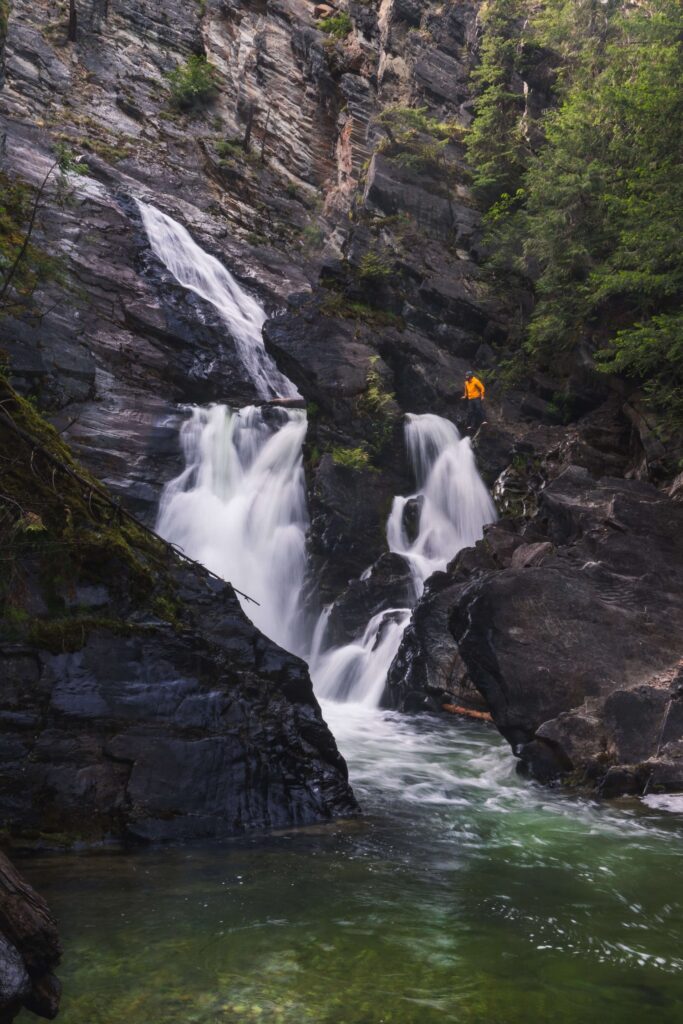
When hiking it’s important to avoid harmful practices such as disturbing plants or rock-stacking, or removing any natural object from flowers to rocks, as it’s important to leave the environment as natural as possible for the animals and for fellow hikers to enjoy in perpetuity. As many flowers as there are, there are few enough that if we all took one, then there wouldn’t be any left. Take only photos, leave only footprints.
If you haven’t heard of Leave No Trace principles, they’re also really essential to read up on before heading anywhere into the outdoors in general. Following these important principles basically means doing your best to leave beautiful places like Perry Creek Falls as good (if not better) than you found them, both for their preservation and for the enjoyment of other visitors.
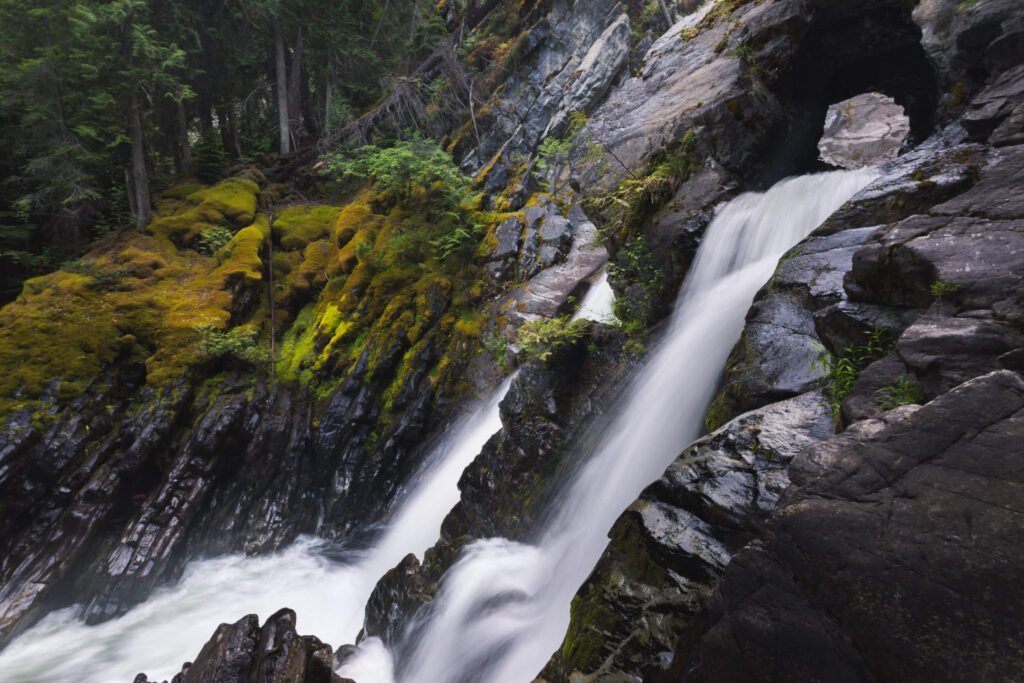
Perry Creek Falls Round Trip Details
Distance: 3.8 KM / 2.4 MI
Elevation Gain: 148 M / 485 FT
Hiking Time: 1 HR
Hiking & Safety Tips
- Prepare for the possibility of wildlife encounters. Bear spray is a must whenever travelling in bear country, as well as learning how to use it. Though your chance of an aggressive bear encounter is low, it is always better to be prepared with bear spray. Bear bells are proven to be an ineffective bear deterrent, and are actively discouraged by Parks Canada. The best way to let bears know you’re around is simply to use your voice. Make sure to keep a respectful distance from wildlife and never feed the animals. It may seem kind but it doesn’t just kill wildlife and put people in danger, it’s also in many cases illegal.
- Research current trail conditions and make sure you are well-informed about the route before you leave, and assess if it is within your capability. Be aware of what time it gets dark and check the weather forecast. Make sure to tell someone where you’re going and when you expect to return. Every year as more and more people try hiking for the first time, the number of rescues goes up. Being prepared is the best defense.
- Pack everything you need for a successful hike, including enough water and energy-rich snacks. Remember to pack out everything you pack in though – don’t expect to find a convenient garbage can halfway up the trail. Bring appropriate layers (remember you’ll warm up once you start hiking) and sun protection. Hiking poles may be helpful but are not required. In addition to not leaving any garbage on the trail yourself, I highly recommend bringing a garbage bag and collecting any trash that you do see on the trail. You’re guaranteed to make the hike to Perry Creek Falls a more enjoyable experience for the next person.
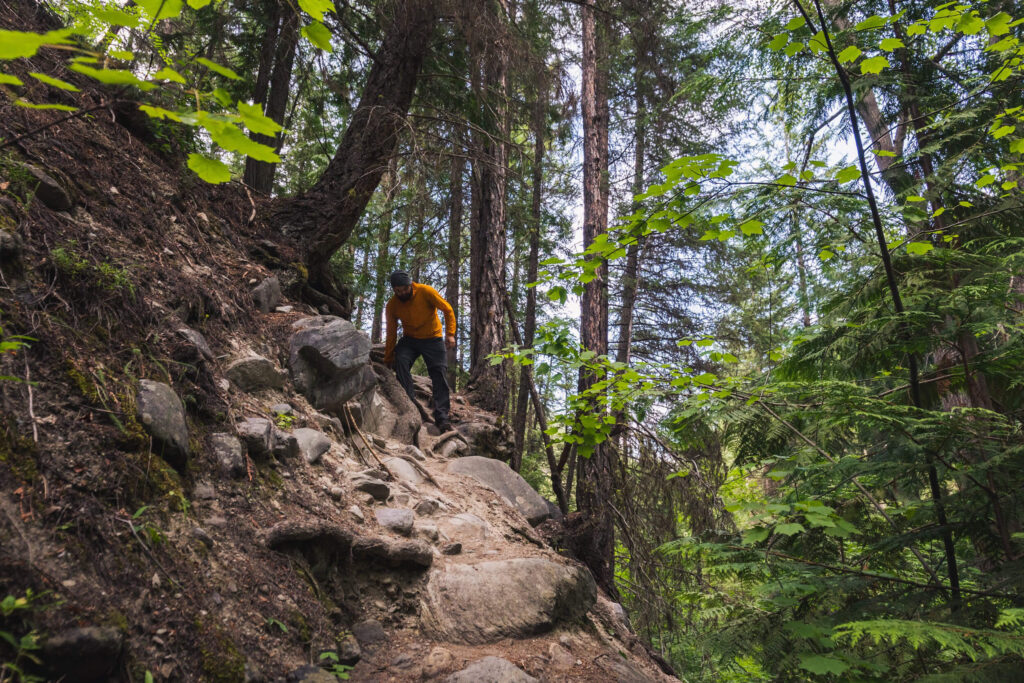
When to Visit Perry Creek Falls
Spring runoff means that Perry Creek Falls is at its most powerful in Spring, however I recommend waiting until water levels go down a bit in summer for the best time to visit. For reference I visited in late July and in my opinion it was at the optimal strength. During runoff, though powerful, it loses a lot of its shape and just becomes a wall of white foaming water. I think it’s prettier in the summer when it has a bit more character to it. Later in the year strength will continue to diminish, and if visiting in Autumn except a fairly mild and weak flow, with the exception of immediately after rain. That said, my understanding (though I have not seen for myself) is that when it dries up a little the water level isn’t quite high enough to flow through the hole, making it possible for the adventurous to climb up and through. If anyone can confirm this for me or wishes to tell me I’m completely wrong, please leave a comment at the bottom of the page.
How to Get to Perry Creek Falls Trailhead
Parking is at a small unsigned dirt turn-off right before a hill on the Perry Creek FSR. From either Cranbrook or Kimberley it’s about a half hour drive. The road is about as good as an FSR can get – despite being rocky and bumpy, there aren’t any potholes or ruts that would cause problems for any car. From just south of Wycliffe, follow signs for Wycliffe Regional Park. Continue driving past the park along Perry Creek.
Click here to open the exact trailhead location in Google Maps.
Hiking to Perry Creek Falls
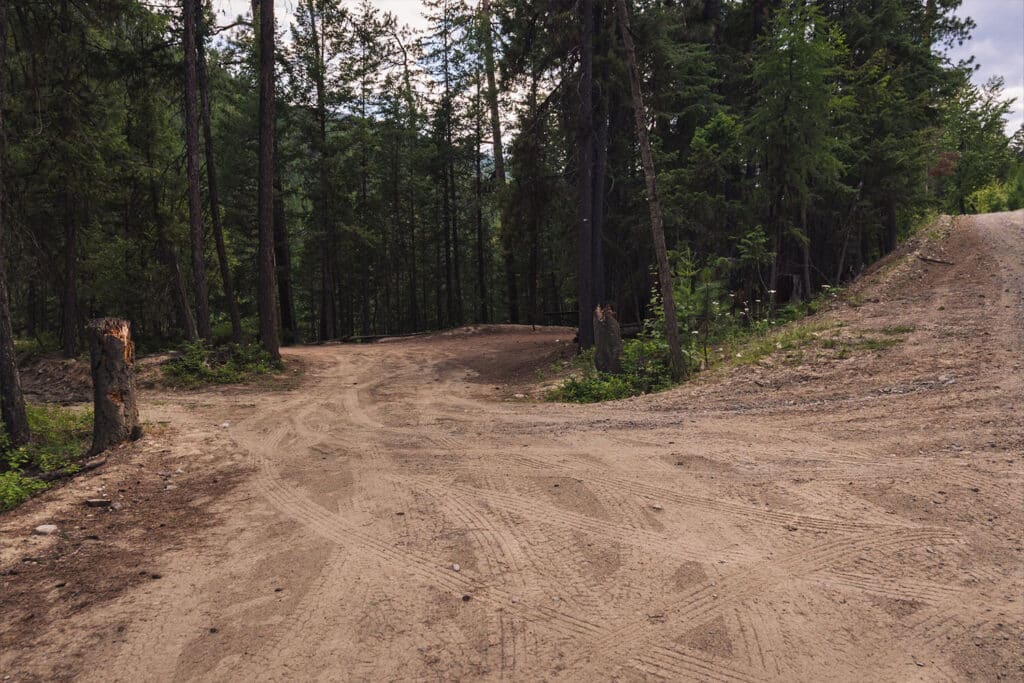
The small parking area as seen from Perry Creek FSR. A brown gate is visible at center. From here Perry Creek is audible way down below.

Heading down past the gate along an old road.

The old road descends lazily and is as simple and easy as could be.
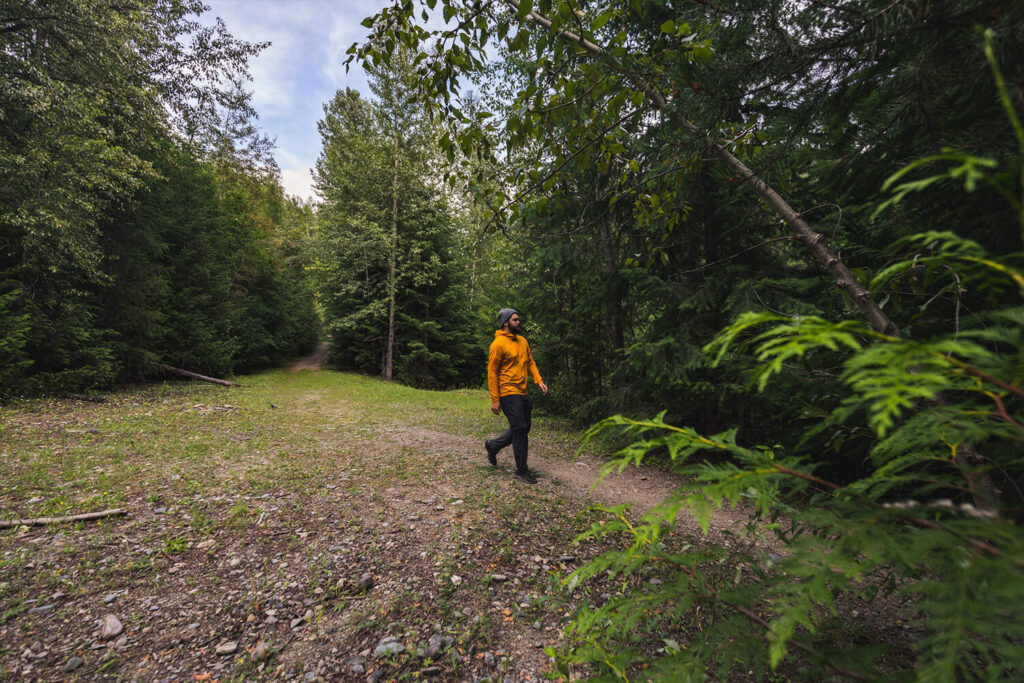
After a small clearing the road turns into a trail continuing straight ahead.
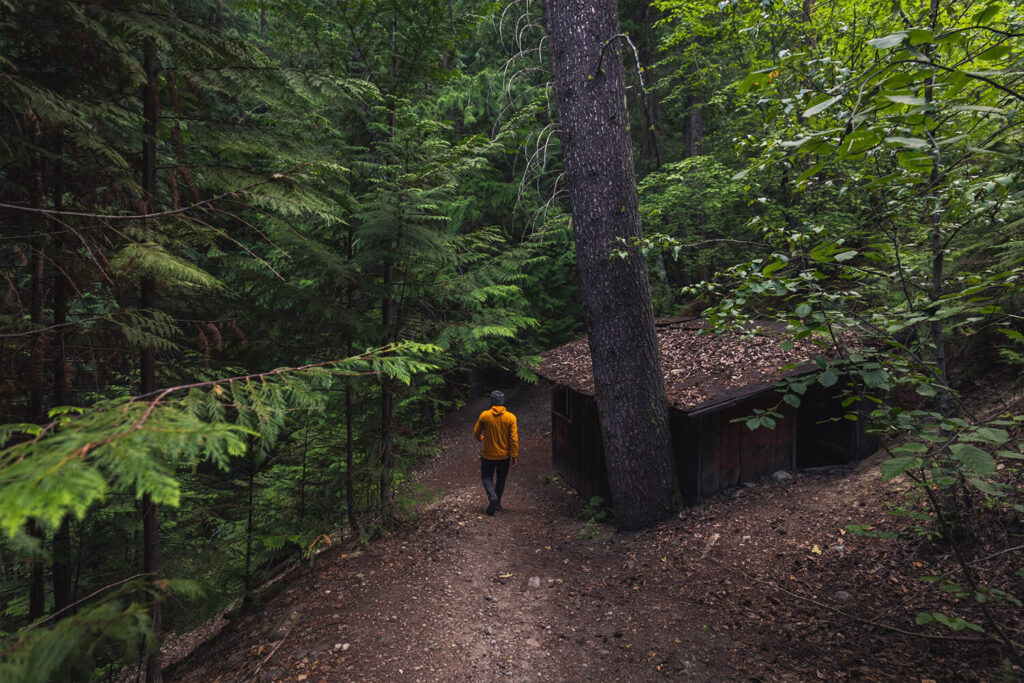
A sharp left turn at this clearly haunted cabin, after which the trail heads down at a steeper grade.
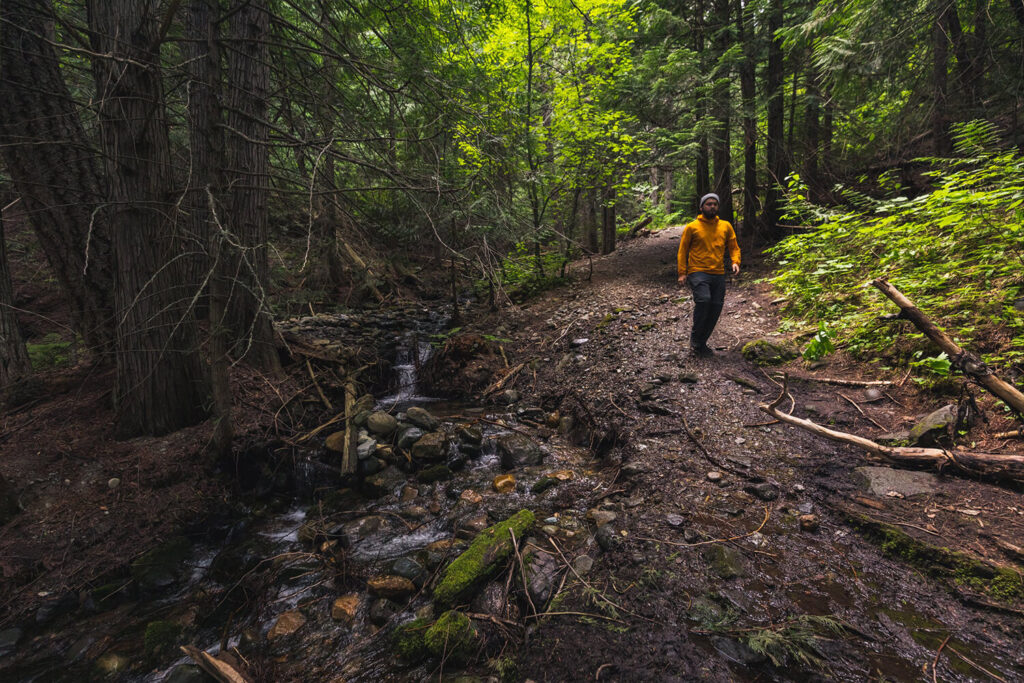
The trail follows a lovely stream straight downhill.
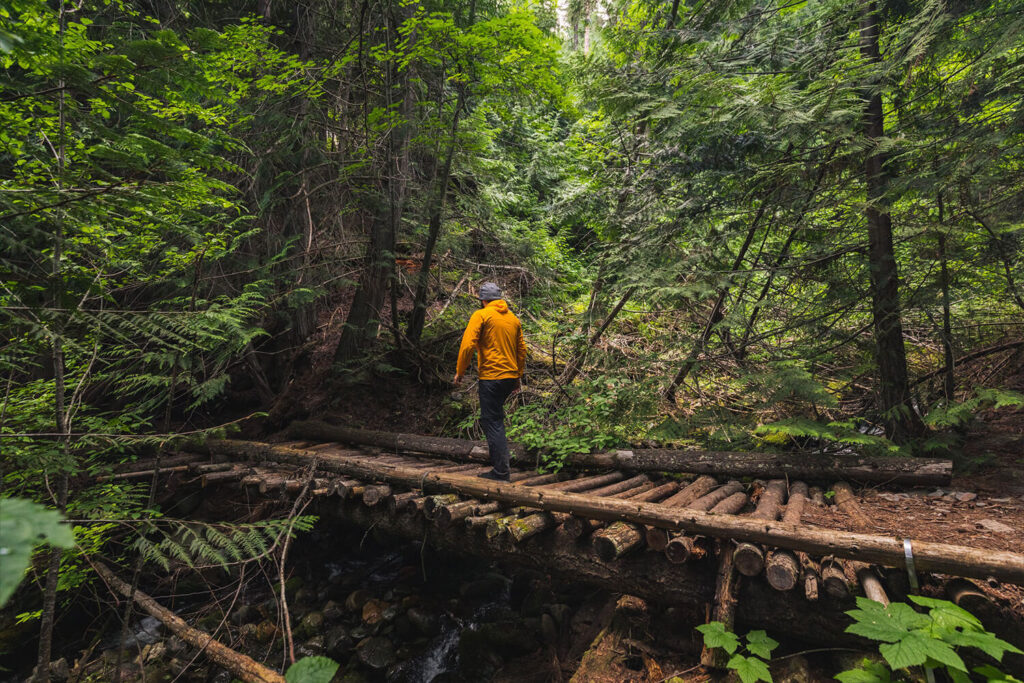
Technically a bridge. Crossing over the stream here.

A short distance after the bridge, the path forks. Turning right here.
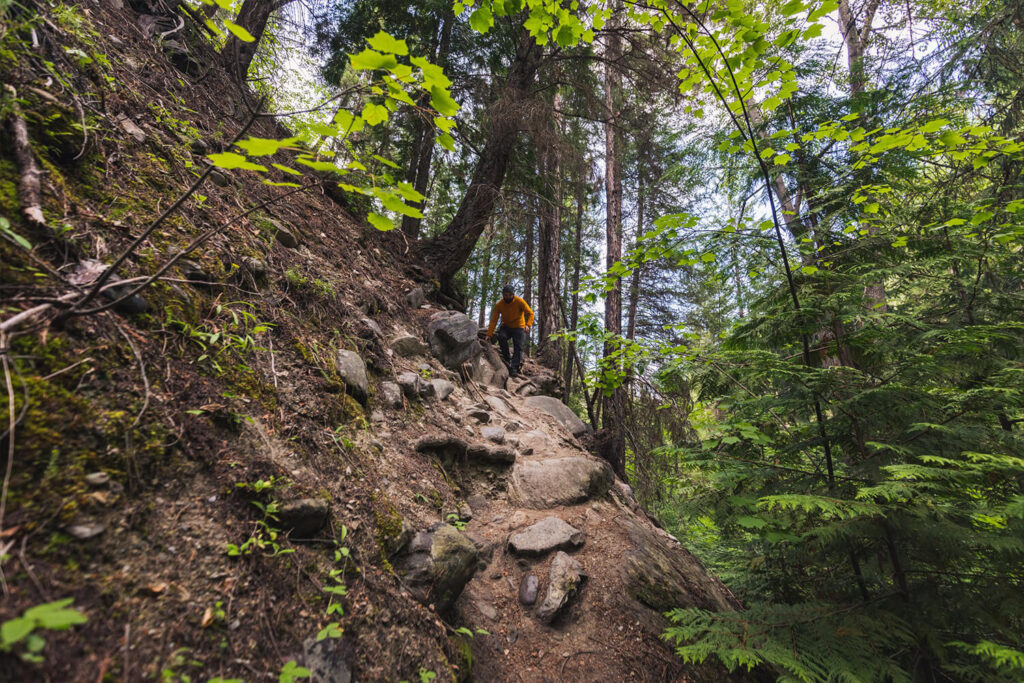
The trail now runs parallel to Perry Creek, and slowly descends to join it.
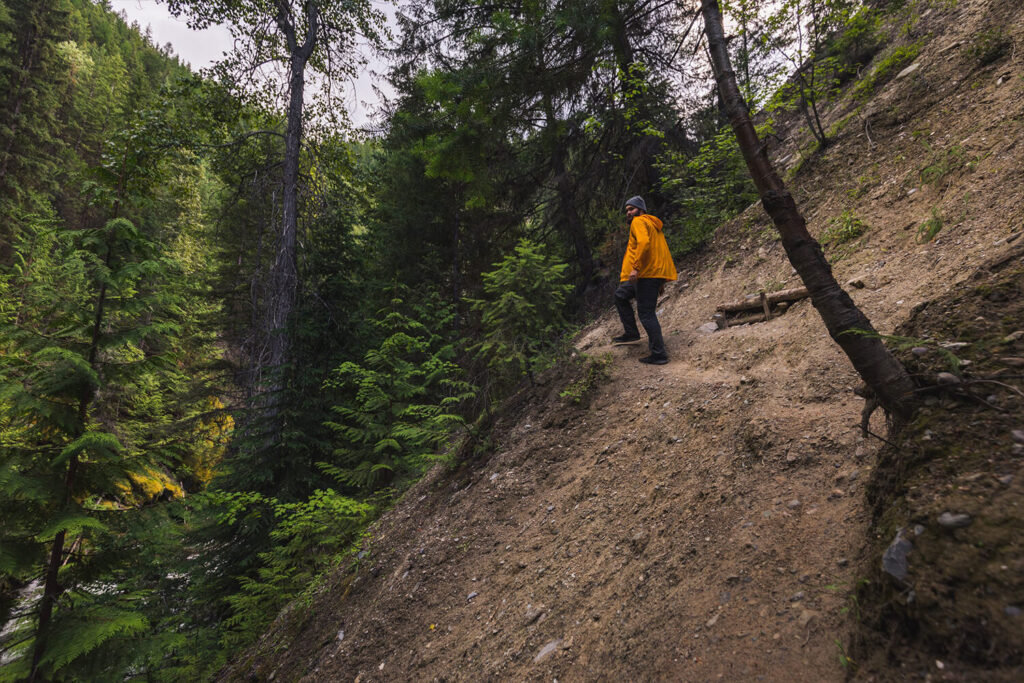
This short steep section only extends as far as it is visible here. It didn’t give me any trouble but might be more challenging when wet.
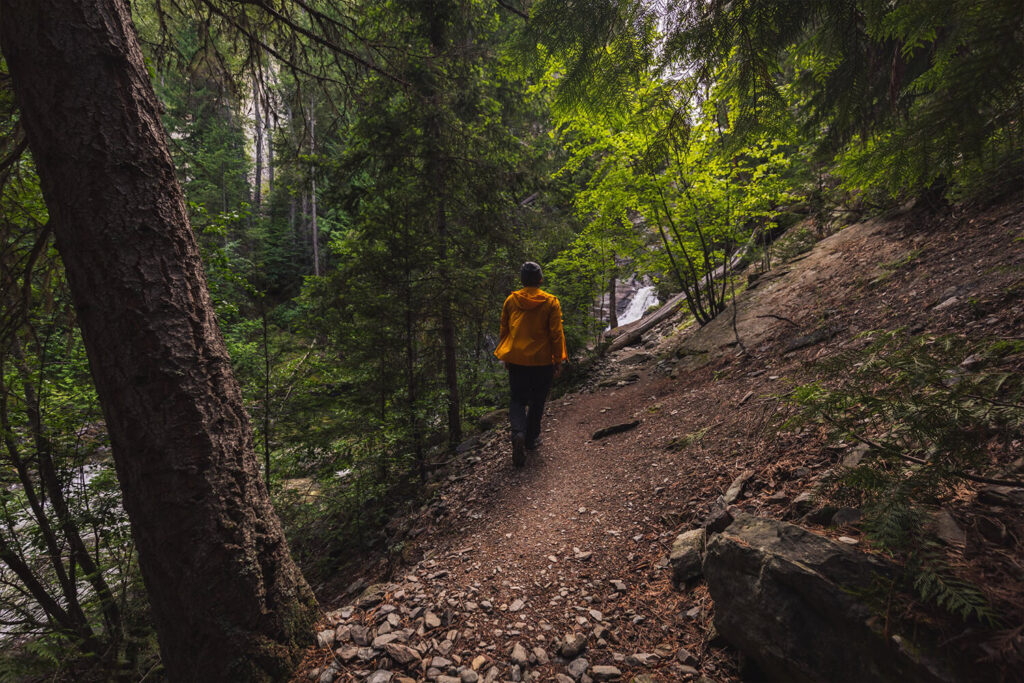
The falls visible up ahead.
Recommended Hiking Gear



Water is a must whenever I’m hiking, especially if the sun is going to be out. My favourite water filter I’ve used is the Katadyn BeFree 0.6L, which unlike other water filters I’ve used packs up really small and lightweight. For hikes where I know there won’t be any readily available water sources along the way, I make sure to bring my own. The Hydrapak Stow 1L bottle is my go-to, for the same reason that it’s made of a soft plastic that folds up and doesn’t take up any more extra space than necessary in my pack. Finally, Aquatabs are another great option for purifying water, with one tablet being suitable for one litre of water. I previously used the Grayl water filter while travelling internationally, and though I found its hard body more convenient for day to day use and easier to drink from, it has a little too much bulk for my fast-and-light style of hiking.



The secret to all my photos of gorgeous sunset and sunrise mountaintop views? A lot of hiking in the dark. And let me speak from personal experience when I say that the last thing that you want to happen when hiking is to be caught in the dark without a headlamp. I used the Black Diamond Spot 400 for years and it worked great – until I lost it on top of a mountain somewhere. The only downside to it was having to worry about the batteries dying, though there’s also a slightly more expensive version that has a rechargeable battery. Nowadays I’m using the Petzl Actik Core, which is a bit pricier than the more budget-friendly Black Diamond, but is also brighter, more comfortable (in my opinion), and has a hybrid power system that is rechargeable but can also take AAA batteries if needed.
You won’t see me using trekking poles on shorter hikes often – but on long hikes and backpacking trips, as well as certain scrambles, they are an absolute lifesaver. I’ve invested in a high quality ultra-lightweight pair of MSR DynaLock Ascent carbon poles which, while pricey, I don’t regret one bit. If you’re not entirely sure how much use you’re going to get out of a pair of trekking poles, the best budget-friendly option would be the Trekology Trek Z 2.0. Amazon does sell a lot of cheaper Made in China-style trekking poles for cheaper, but these usually are much much heavier and not worth buying.
All the best and most long-lasting cables and power banks I’ve ever owned have been Anker. I once had a phone cable from them that lasted me over three years of daily use! That’s why I keep an Anker PowerCore Essential 20K power bank on me. Like many people I use my phone for a lot of stuff when hiking (checking in with family, using online maps, taking photos, flying my drone) so I like to be prepared for that low battery warning by having a backup power source on me just in case.



The only socks I ever buy for myself are from Darn Tough, and I almost always make sure to wear them when hiking. After years of having no problems only wearing these comfortable and rugged socks for hikes, I accidentally wore a pair of no-name socks on a hike last year and ended up with blisters on both feet. Safe to say I’m back to sticking with the Darn Tough. And the best part? They have a lifetime guarantee, meaning that if they ever wear out you can send them back for a brand new pair. For hiking footwear I go between a pair of lightweight approach shoes for quick and dirty mountain ascents or anything involving scrambling and more heavy-duty boots for longer treks. I’ve worn a couple different versions of the lightweight but super durable Arc’teryx Konseal FL 2 approach shoes for a few years now and am very impressed with the durability. I also really like the thick toecap that keeps me protected every time I stumble into a root or large rock. For longer, tougher, or muddier treks I rely on my LOWA Camino EVO GTX, which I find insanely comfortable and made of very high quality.



I wear my Ar’teryx Gamma Lightweight Pants on every single hike I go on, and on many days when I’m not hiking. After several years of abuse they are still holding together extraordinarily well, with only a few small holes from where I’ve fallen down and some slight stains from being repeatedly coated with mud. They’re lightweight, breathable, and super comfortable. For lightweight and breathable hiking tops I’m a big fan of both the Patagonia Capilene Shirt and the MEC Core Shirt. My Arc’teryx Squamish Hoody shows up in a lot of my photos. It’s super lightweight and packable, and does a great job of cutting the wind while also being pretty breathable. I also have an Arc’teryx Atom Hoody and Arc’teryx Beta LT that I pull out for cooler or wetter conditions.
I hope you enjoyed this guide to hiking to Perry Creek Falls near Cranbrook! Feel free to leave any questions in the comment section below or to contact me directly via social media.

Great description of the falls! Great pics. One thing I love is the moss on the rock face–it’s incredible when you get close to it. Just so folks know, this isn’t an ‘easy’ hike for anyone who’s older or might have some physical challenges. As the pics show, some sections are a bit challenging … but the overall hike to the falls from the parking area isn’t a long one.